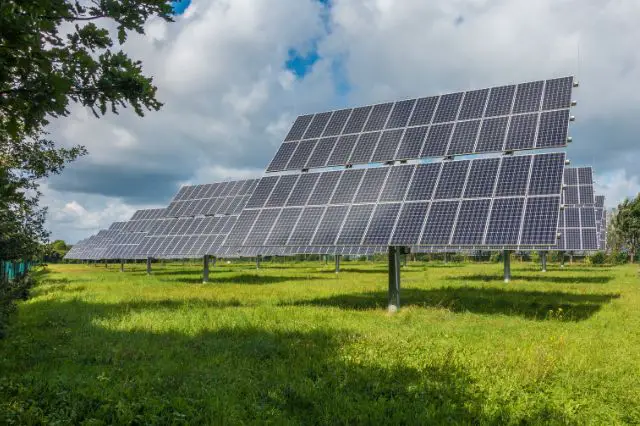What Factors Should You Consider When Deciding Where to Put Solar Panels?

Installing solar panels is a substantial step towards adopting renewable energy and lowering your carbon footprint. One of the most paramount decisions in this process is resolving where to place the panels. The location of your solar panels can profoundly impact their efficiency, energy production, and overall effectiveness. Several elements come into play when assembling this decision, each contributing to optimizing your solar system’s performance and long-term benefits.
Factors That Affect the Location of Solar Panels
1. Sunlight Exposure and Orientation
The amount of sunlight your panels receive directly influences their energy production. Optimal placement involves positioning the panels to capture the most sunlight throughout the day. In the northern hemisphere, south-facing panels tend to receive the most sunlight. Nevertheless, east and west orientations can also be effective, especially if your energy consumption patterns align with morning or afternoon sun exposure. Factors such as shading from trees, buildings, or other obstructions should be carefully evaluated to avoid reducing energy generation.
2. Roof Angle and Tilt
The angle at which your solar panels are tilted can significantly impact their performance. The ideal tilt angle varies based on your geographical location and the season. If your panels are fixed, aiming for a tilt angle equal to your latitude can be a good starting point. However, adjustable mounts can be optimized for different times of the year. Roof angle adjustments ensure that panels are positioned to receive maximum sunlight, minimizing energy losses due to suboptimal orientation.
3. Roof Material and Structural Integrity
The type of roofing material and the structural integrity of your roof are paramount considerations for rooftop solar installations. Heavy solar panels can add weight to your roof, potentially impacting its stability over time. It’s paramount to assess whether your roof can support the additional load. Certain roofing materials, such as metal and asphalt shingles, are more appropriate for solar panel installations due to their durability and ease of integration.
4. Shading and Obstructions
Shading is a consequential factor that can drastically diminish the efficiency of your solar panels. Even a small quantity of shading on just one panel can substantially lower the entire system’s energy production. Analyze potential sources of shading, including nearby buildings, trees, chimneys, and other structures. If shading is unavoidable, consider using technologies like microinverters or power optimizers that mitigate the impact of shading on energy production.
5. Available Space
The available space on your property is vital in determining whether to opt for rooftop or ground-mounted solar panels. Ground installations might be a better choice if your roof has limited space or is shaded. Ground installations offer the advantage of adjustable tilts and orientations, potentially leading to better energy capture. However, ground installations require additional land and proper site preparation, impacting installation costs.
6. Local Climate and Weather Patterns
The local climate and weather patterns of your area influence solar panel performance. Cloudy and overcast regions might experience reduced energy production compared to sunnier areas. However, solar panels can still generate significant energy even in less sunny climates. Additionally, snow accumulation on panels during the winter can impact energy production. Regular cleaning or tilted panel setups can help mitigate this issue.
7. Aesthetic Considerations
The visual impact of solar panels on your property is an aesthetic consideration that should be considered. While some homeowners prioritize energy production over aesthetics, others seek to maintain the appearance of their property. Rooftop installations are generally less visually prominent, as they integrate with the existing structure. Ground installations might be more visible and require thoughtful landscaping or screening.
8. Local Regulations and Permits
Before installing solar panels, you must know local regulations, zoning codes, and homeowner association (HOA) guidelines. Some areas have specific requirements governing solar panels’ placement, size, and appearance. HOA restrictions impact your ability to install ground-mounted systems or dictate certain design elements. Ensuring compliance with these regulations is crucial to avoid potential conflicts and legal issues.
9. Energy Consumption Patterns
Understanding your household’s energy consumption patterns is essential for optimizing solar panel placement. Analyze when you use the most energy and align your panel placement to capture sunlight during those peak usage times. This ensures that you’re generating electricity when needed, leading to greater energy bill savings.
10. Future Expansion and Upgrades
Consider your plans when deciding on solar panel placement. If you anticipate adding more panels or upgrading your system, leave room for expansion. This could involve reserving additional roof space or planning a larger ground-mounted array. Evaluating your long-term goals ensures that your initial installation can accommodate future upgrades seamlessly.
Deciding where to place your solar panels involves comprehensively evaluating multiple factors. From sun exposure and orientation to roof angle, shading, available space, climate, and aesthetics, each consideration contributes to the overall performance of your solar system. By carefully weighing these factors and consulting with solar professionals such as Solar Peak serving Salem, Oregon, you can make an informed decision that maximizes energy production, efficiency, and the long-term benefits of your solar investment.





